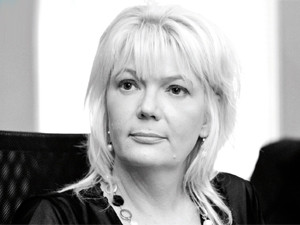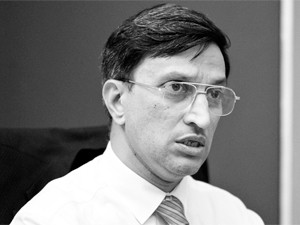
The last roundtable on this topic found that while server and storage virtualisation are fairly mature and accepted by business, desktop virtualisation is seen as a more difficult sell against traditional desktop computing. However, a particular global trend may be about to change all that.
According to Gartner, total worldwide PC sales (desktop and notebook computers) in 2013 were 82.6 million units. Meanwhile, almost 200 million tablets were sold last year. The question these statistics pose is: will the growing influence of tablets change the end-user's perception of and willingness to accept desktop virtualisation solutions?
Arthur Goldstuck, MD of World Wide Worx, begins the discussion by providing some local context to those numbers, along with a dash of reality. "In SA," he says, "I can't give sales figures, but I can give you a feel of the installed base of machines. Towards the end of last year, we had eight to ten million desktops versus 1.5 million to two million tablet PCs.
"So you have a situation where the installed base of the desktop is between four and five times that of tablets. One doesn't get a sense that tablets are replacing desktops yet," he says.
According to Hennie van Tonder, head of product at MWEB Business, the main inhibitor to tablets replacing desktops is to do with the configuration. "On a tablet and a smartphone, consuming content is quite easy, but as soon as I want to create a word-processing document or a spreadsheet, I need to use the desktop," he says. "The user interface and usability of those virtualised applications in the virtual desktop is quite different."
Top-down
Ken Marsden, CTO for Aptronics, offers another reason for the relatively slow uptake of tablets in the local business world. "The drive is more from the executive suite than from the bottom-up," he says.
Using his own clients as an example, Marsden says executives no longer want to take a big pile of papers home to review before a board meeting. They want that content sent to them on their tablets and they want the IT department to make sure it's protected. If the device is lost, they want IT to ensure the data isn't lost and also that it will be available remotely by other means," he says.
The user interface and usability of those virtualised applications in the virtual desktop is quite different.
Hennie van Tonder, head of product, MWEB Business
In essence, though, he agrees that tablets are currently used for the consumption of data rather than the creation thereof.
But he adds a rider: "If you look at it from an education point of view, almost every one of the universities is now providing documentation to students on a tablet. If you don't have a tablet, you don't get the documents. It's that simple."
That said, Marsden still doesn't see tablets replacing desktops any time soon.
Ravi Bhat, regional director, sub-Saharan Africa at VMware, offers his own experiences and those of his daughters - one at university and the other at high school - as a glimpse into the future.
"Throughout my MBA, I was using my iPad as my device to connect. All the applications from the university are now being made available on desktop as well as mobile," he observes.
Bhat says it goes further, because tablets are fast becoming mandatory equipment for high-school pupils too. "The bulk of the work is not so much document creation but a significant amount of collaboration. That collaboration is done using tablets and PDAs," he adds.
"That's now or in the next few years, and it's going to come into the enterprise. So the (volume) is going to be accelerated, like it's being accelerated everywhere else in the world. We need to gear ourselves up to that."
Enterprise futures
Bhat also says while adoption of virtualisation at a desktop level has been limited in the past, it will not be so for much longer. "You now have organisations that have an ability to look at all these devices, all the applications, on one single platform," he says.
He also makes the point that this type of virtualisation makes it possible to serve the differing needs of a wide variety of users, from a call centre agent to an executive.

Helen Kruger, founder and MD of Troye Computer Systems, agrees that different users have different needs, but isn't sure that tablets will replace desktops in the near future. She points out that many executives who use tablets to view reports, documentation and connect to the Internet still have their laptops.
"It's all about the applications and what work you need to do. The functionality isn't there yet (for tablets) and I believe it's going to take some time," she adds.
Another perspective is offered by Stuart Cheverton, business development consultant at Hitachi Data Systems, who suggests that tablets are complementary to desktop or laptop PCs. He cites the BYOD trend as a key driver in the enterprise.
Many people, he says, bought tablets into their organisations in a personal capacity, but now the CXOs are sitting there thinking: "Crikey, all my data is on everyone else's devices."
Security imperative
"The driver now is how to lock that data down. It's almost not looking at desktop virtualisation, but looking at how we control the data, whether it be on a laptop, tablet, or whatever," suggests Cheverton.
But it depends on the use case, he adds. "If you have a largely sales-led organisation that's dealing in the typical Microsoft Office suite, you don't need virtualisation to achieve (data security). That's where you need some kind of enterprise content management, which is similar to collaboration tools. That will achieve it."
Whatever the device, whether desktop PC, laptop, or mobile phone, it needs to have one platform where it becomes a virtual workspace. How do you get a virtual workspace? Virtualisation.
Ravi Bhat, regional director, VMware
Bhat believes, however, there's more to this than just securing the data, which, he concedes, is also important. He poses a pertinent and rhetorical question: how do you store your data when a significant portion of it is coming through social applications?
"Virtualisation addresses these challenges by integrating the entire environment. Whatever the device, whether desktop PC, laptop, or mobile phone, it needs to have one platform where it becomes a virtual workspace. How do you get a virtual workspace? Virtualisation," asserts Bhat.
Van Tonder then asks why companies and enterprises haven't adopted virtualisation in a way that he can see and use in a small, medium business of about 350 employees?
"We still have meeting notes being made on Evernote, then stored and e-mailed to people to download via the Internet. My data is not stored in a central place. I have company confidential data on the laptop I carry around. Some of my data is backed up on some hard drive somewhere on the network," he says.
"There are security issues, but I haven't seen virtual desktops actually bring centralisation to my data, my storage and accessibility of data - personal and business data. I still see it as a challenge," remarks Van Tonder.
Data challenges
Cheverton notes it's not just in SA where the uptake of desktop virtualisation has been rather underwhelming. This is also the case in the UK, and he suggests that a major reason for this is that users want their own device.
However, he believes that virtualising applications is a better bet, just as long as the data is kept separately from the application. The data must also be completely mobile, he says.
"You can have your data wherever it is. So documents you create on your laptop are synced automatically with the data centre and are available on your iPad or (smartphone). I'm seeing that as a bigger driver of virtualisation," he comments.

Kruger picks up on the data issue, making a valid point: "From a regulatory compliance perspective and in terms of data security, you don't want that data on your laptop. If that is business data, it has to be properly secured," she interjects.
Goldstuck asks the panel if, in their view, desktop virtualisation improves or erodes confidence in security.
Marsden says the biggest issue around technological change is the people impacted by that change. "If someone has a desktop with its own CD-ROM and he or she is able to plug anything into it, if you suddenly supply them with a tablet, it's going to cause problems. Suddenly they can't do what they used to do before and it doesn't matter how well the system performs or how brilliantly it's deployed. That user is going to complain. You need education," says Marsden, adding: "We're moving away from just a virtual desktop, to a device management scenario. The point is to change this scenario from device-centric to user-centric."
Bhat agrees that user education is the key: "Let's look at a person who uses these applications at the consumer grade level. When they're using those applications in their personal life and then come to a business environment, the expectation is that they will get the same experience."
Cheverton agrees: "Corporates are identifying that we have to match the adoption of the consumers with technology in the enterprise, otherwise we're just going to be left behind."
Van Tonder sees challenges and opportunities because of the global base of end-user developers creating relevant consumer applications and products that could conceivably be useful in the enterprise. But, he says, in that world, there are at least two different users - the CTO and the end-user.
He asks: "How do you address the CTO's requirements, merging these two in a way that is acceptable for different levels of security, maturity and understanding enterprise risk when it comes to data management?"
Cheverton acknowledges the challenge but says it's being dealt with by an evolution of consumer-led products that are now available in the enterprise. "We have to make sure that IT management is happy with the solutions, that security is intact, that data can be wiped remotely if need be," he says.
The 900lb gorilla
Goldstuck poses a question about the elephant in the room or, as he puts it, the 900lb gorilla. "Microsoft has traditionally dominated the desktop, and virtualisation threatened that, but Microsoft has now also become the 900lb gorilla in virtualisation," he says.
His final question to the panellists is: "What do you think Microsoft's dominance looks like in the future?"
When it comes to delivering an application, it's going to be on the best platform available for that application.
Stuart Cheverton, business development consultant, Hitachi Data Systems
Bhat says it all comes back to applications. "As the mobile-cloud era is taking off, the applications we're talking about are increasingly non-Windows applications. And if you look at catering for that new world, the mobile-cloud world, you will require solutions for all of those (applications)."
He asks rhetorically: "Are enterprises going to cater for Microsoft or are they going to cater for the environment that confronts them?"
Bhat adds: "We're no longer talking about which application. We're talking about how we can get data centres, organisations, to deliver these heterogeneous applications in a virtualised environment faster, cheaper, more efficiently, more securely and more effectively."
Cheverton agrees and adds that the data centre is in the process of transforming itself. "When it comes to delivering an application, it's going to be on the best platform available for that application, whether that's a Windows platform, a Linux platform, or Unix," he says.
The bigger question to ask, he suggests, is about managing the data. "When you start managing data, it's going to be independent of operating systems and applications. Because data is now outliving applications.
"The shelf life of an application is maybe five, seven years. You look at data and compliance requirements around data, and people are keeping that for 20, 30, 40 years."
Good for Microsoft
Kruger maintains that virtualisation has been good for Microsoft. "We've seen server licensing increase tenfold," she says. "Where customers had 150 servers, they now have 50 virtual servers, 50 Microsoft licences on each host."
On the desktop, she doesn't see an end to the Microsoft hegemony, at least not for a while. At the consumer level, however, Kruger suspects the company may be losing the game.

Marsden points to the massive investment in terms of both development and licensing that most enterprises have in Microsoft and doubts it will change any time soon. But what he does see happening is a proliferation of new operating systems, which result in future applications not being operating system-specific.
"They will be device-agnostic and you're going to be able to run them from wherever," he adds.
"Microsoft won't disappear, but they're going to become less and less relevant as far as the desktop is concerned. Which is why they're also moving Microsoft to Office 365 and the cloud, so you don't have to have a Microsoft desktop to get to your Office," says Marsden.
For Van Tonder, there's plenty of opportunity for people who can move, develop, deploy and change with speed. This, he suggests, could be the undoing of Microsoft, which has a lack of momentum and is slow to move and change.
"Microsoft's biggest challenge and competition is the speed and flexibility that consumers require these days," he says.
Goldstuck concludes the discussion with an interesting play on words: "The business case for virtualisation is clear and present. And it is a clear and present danger for those people who are not ready for virtualisation or who don't deploy it effectively."
Share